Check out these amazing hotel deals!
- Save up to 30% on your hotel in Hawaii!
- Last-minute holiday hotel deals
- Top hotel deals for a new year trip
- Visiting Paris? Find the Best Deals & Reviews at TripAdvisor.
- Save 30% on hotels in Ocean City, Maryland...a TripAdvisor Top 10 Summer Destination!
- Save up to 30% on your hotel on your Winter Vacation!
- Find top-rated hotels at the lowest prices on TripAdvisor. Check rates now!
- Save up to 30% on hotels for a romantic getaway!!
Even if you are not passionate about opera, you will surely love the architecture, history, and magnificence of the most beautiful theaters in Europe. Even if you have never seen a show, it is impossible to deny that some theaters are the most culturally significant and important buildings in the world. As well as some libraries and some museums, theaters enrich the prestige of the cities that host them.
Many of them can also be visited without purchasing a ticket for a show, although seeing a performance in one of these venues is an unforgettable experience. We have compiled a ranking of the 15 most beautiful and important theaters in Europe, an interesting destination for one of your travels.
15. Opera de Montecarlo, Principality of Monaco
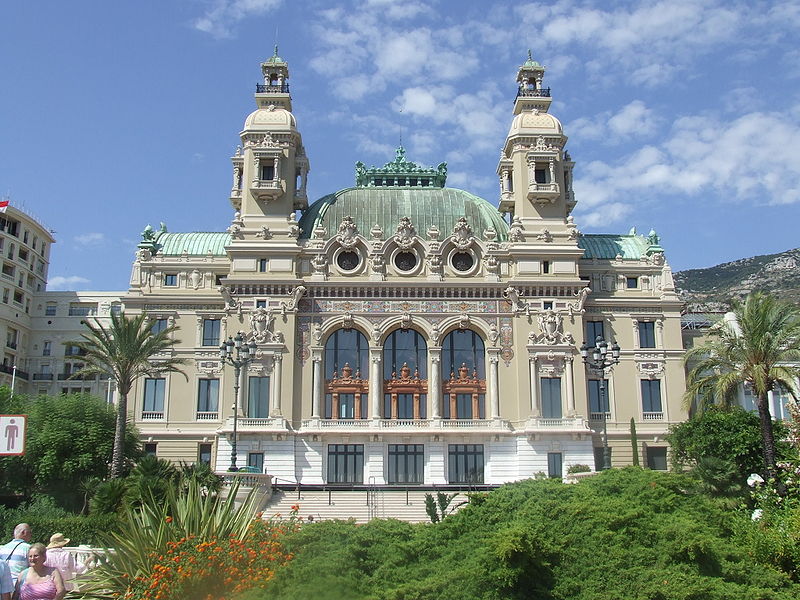
Capacity: 524 seats
Period of construction: from 1870 to 1879
The Opera de Monte-Carlo or Grand Théâtre de Monte Carlo is as sumptuous as the Casino, to which it is adjacent. Prince Charles III and the Société des Bains de Mer commissioned Charles Garnier to design and build the theater after building the magnificent Paris Opera House. The building, with its auditorium decorated with gold and red velvets, has the same style as the Palais Garnier. This theater was opened in 1879 with a performance by Sarah Bernhardt. Later, other great opera singers such as Enrico Caruso performed here. In 1966, Grace Kelly and Prince Rainier III organized a gala dinner in honor of the Principality’s centenary.
14. Nationaltheater, Munich, Germany
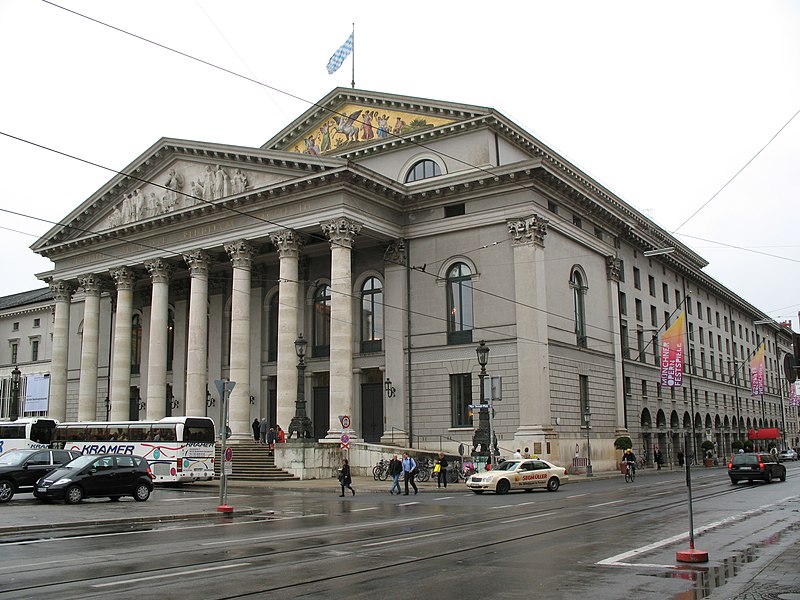
Capacity: 1773 seats, 328 standing places
Period of construction: from 1811 to 1823, from 1825 to 1963
Unfortunately, the original Bavarian theater did not last long: it opened in 1818 but was destroyed by flames in 1823, before its complete construction. Then, it was rebuilt in 1825, as a building with a portico consisting of eight columns, and housed the premiere of Tristan und Isolde (1865), Meistersinger von Nürnberg (1868), Rheingold (1869), and Walküre (1870). During the Second World War, it was destroyed again by Allied bombs and definitely reopened in 1963. Today, it’s one of the largest European theaters and is also one of the most technological.
13. Staatsoper, Vienna, Austria
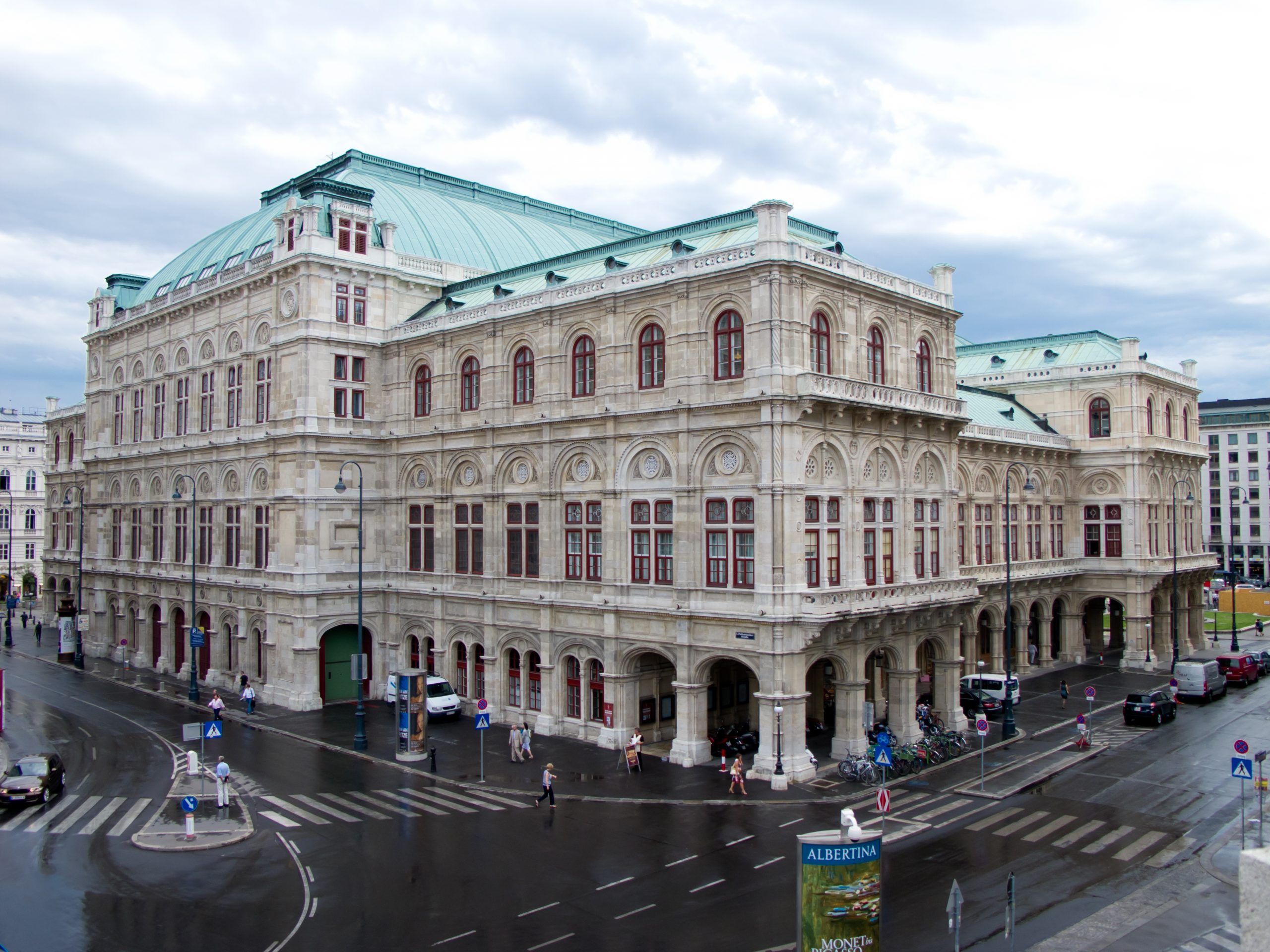
Capacity: 1709 seats
Period of construction: from 1861 to 1869
The magnificent Vienna theater was inaugurated in 1869 with the blessing of Emperor Franz Joseph and Empress Elizabeth. The theater reached its maximum splendor in the period when Gustav Mahler was in charge of its direction. This building was also bombed during the war but was reopened in 1955 with a new auditorium. Today, it represents one of the main attractions of the city.
The main atrium, central staircase, tea room, Schwind Foyer, and adjoining veranda were spared from the bombs and are still the original ones today.
12. The Royal Opera House, London, UK
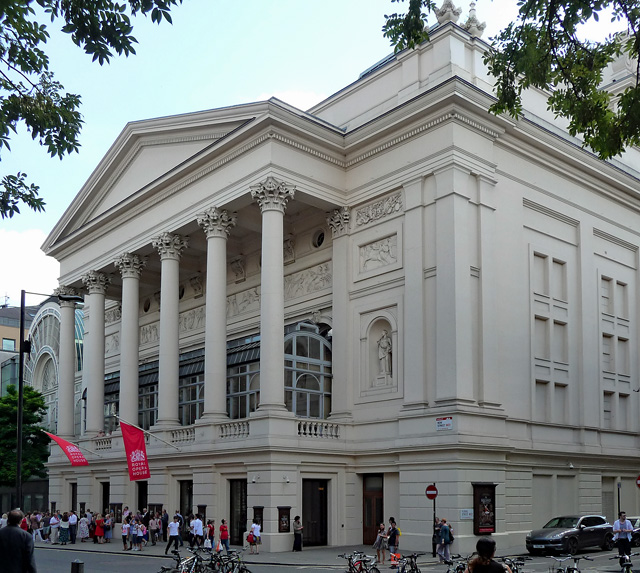
Capacity: 2256 seats
Period of construction: 1732 – 1858
The Royal Opera House in Covent Garden is a result of the union of three buildings dedicated to the opera that stood since 1732 on the same site where the theater is today. The current building was finished in 1858 and also served as a ballroom during the Second World War, it definitively became a theater only at the end of the conflict. Some of the most prominent opera singers, including Plácido Domingo and Luciano Pavarotti, have performed here.
11. Opéra Garnier, Paris, France
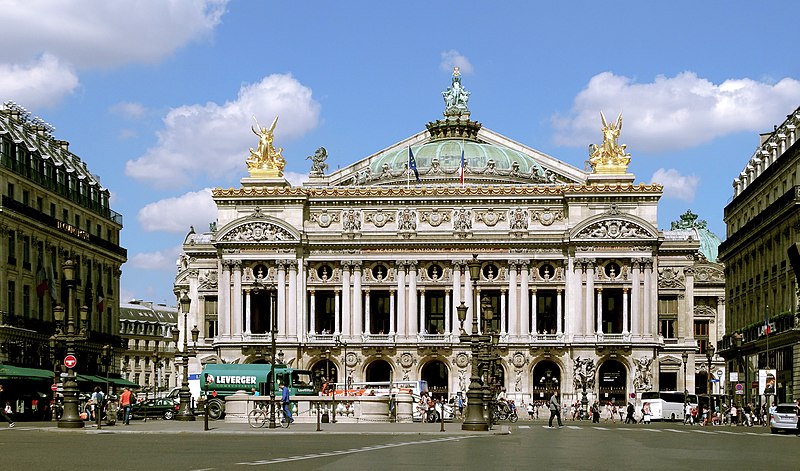
Capacity: 1900 seats
Period of construction: from 1861 to 1875
The opulent Palais Garnier formed an important part of Emperor Napoleon III and Baron Haussmann’s plans for the new Paris. The palace dominates the Place de l’Opéra with its bronze busts depicting great composers such as Rossini, Auber, Beethoven, and Mozart. To decorate the facade, there are also sculptures that personify harmony, poetry, and music. Inside, a grand staircase leads to the spectacular auditorium, where Proust witnessed the spectacle with the Parisian aristocracy. In 1964, the ceiling painted by Chagall was added, representing 14 famous works. Today, the building is also home to the Ballet de l’Opéra National de Paris and hosts minor works, while the most important ones are staged at the Opéra de la Bastille.
10. Magyar Állami Operaház, Budapest, Hungary
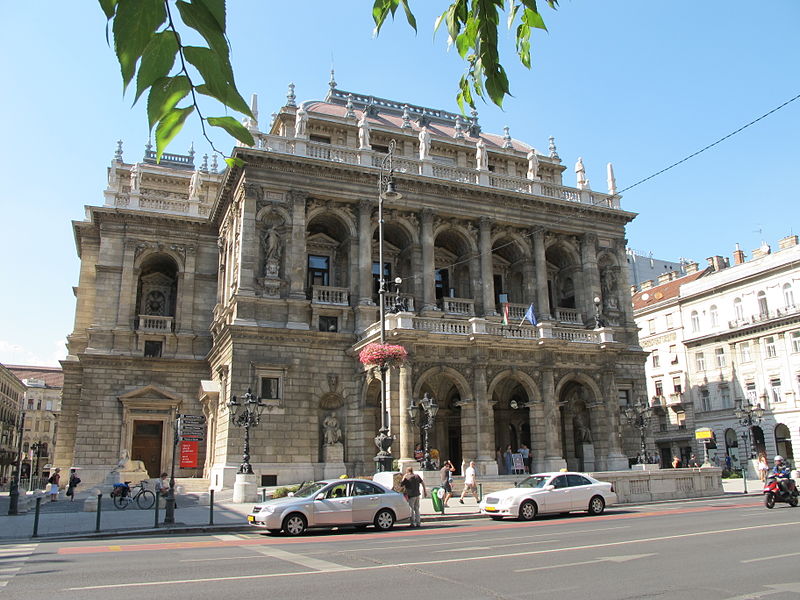
Capacity: 1261 seats
Period of construction: from 1875 to 1884
This beautiful structure is definitely one of the must-visit sites in Budapest. The Hungarians were so anxiously awaiting the opening of this theater, which took place in 1884, that on the evening of the inauguration there was a real assault from the crowd, eager to admire the interiors of the splendid building.
The theater was designed by the Hungarian architect Miklós Ybl, who placed two marble sphinxes to guard the entrance to the building in neo-Renaissance style. Limestone statues of Liszt and Ferenc Erkel, the founders of the Hungarian opera, greet visitors as they enter the theater.
9. Opéra Royal de Versailles, Versailles, France
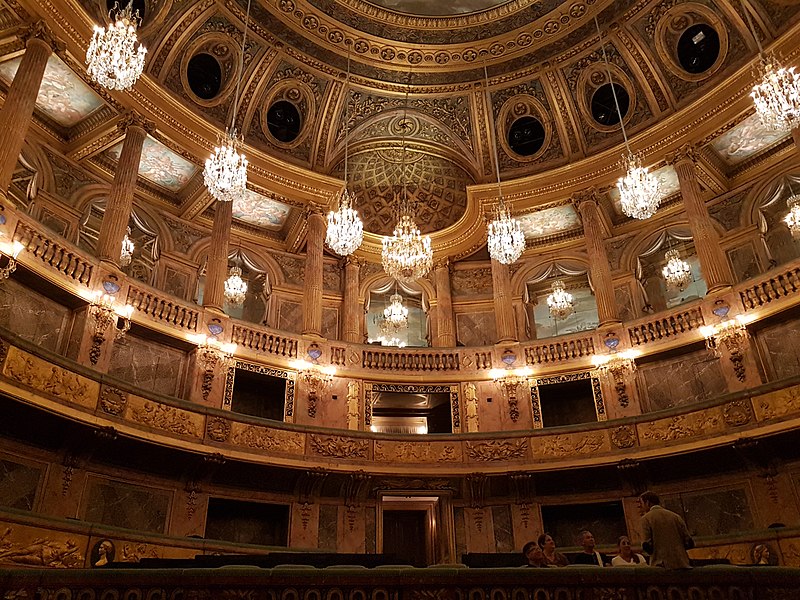
Capacity: 712
Period of construction: from 1763 to 1770
As if the Sun King’s castle wasn’t grand enough, this magnificent theater adds to the opulence of the city. The Opéra Royal de Versailles was finished in time for the marriage of Louis XVI to Marie Antoinette and was inaugurated during the wedding celebrations. The theater has excellent acoustics that goes hand in hand with the sumptuous decorations, made up of gilded and marbled wood. During the summer evenings, the gardens of Versailles are in full swing and host the Grands Eaux Nocturnes, events in which classical music is played and the fountains are illuminated, thus creating a truly magical atmosphere.
8. Massimo Vittorio Emanuele Theater, Palermo, Italy
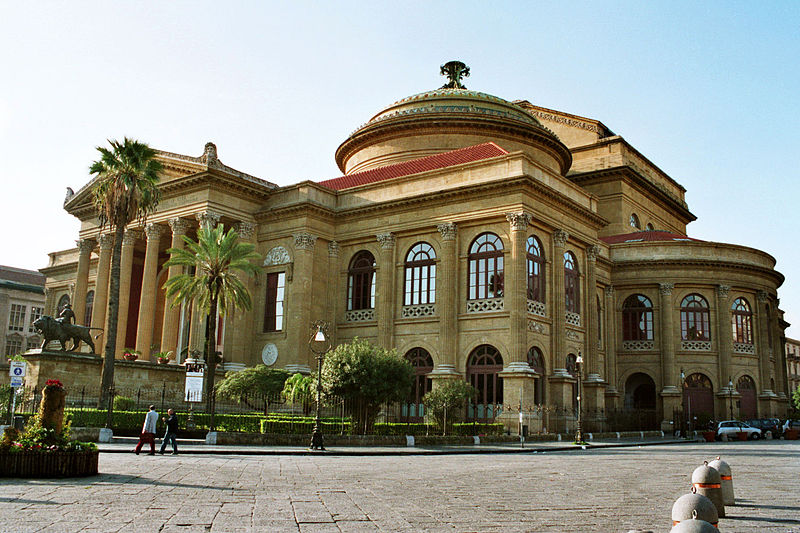
Capacity: 1358 seats
Period of construction: from 1875 to 1891
Fans of the Godfather trilogy will recognize the Teatro Massimo, which appears at the end of the third film of the saga, when Maria, Michael’s daughter (played by Sofia Coppola) is hit by a gunshot on the monumental stairways. The Teatro Massimo today is the largest theater in Italy and the third-largest in Europe. When it was built, Palermo was one of the European cultural capitals. The theater was closed for 23 years, from 1974 to 1997, and reopened with a staging of Verdi’s Aida.
A tip: when you visit the theater, be sure to admire the busts portraying important Italian composers, sculpted by Giusto Liva and his sons.
7. Stavovské Divadlo, Prague, Czech Republic
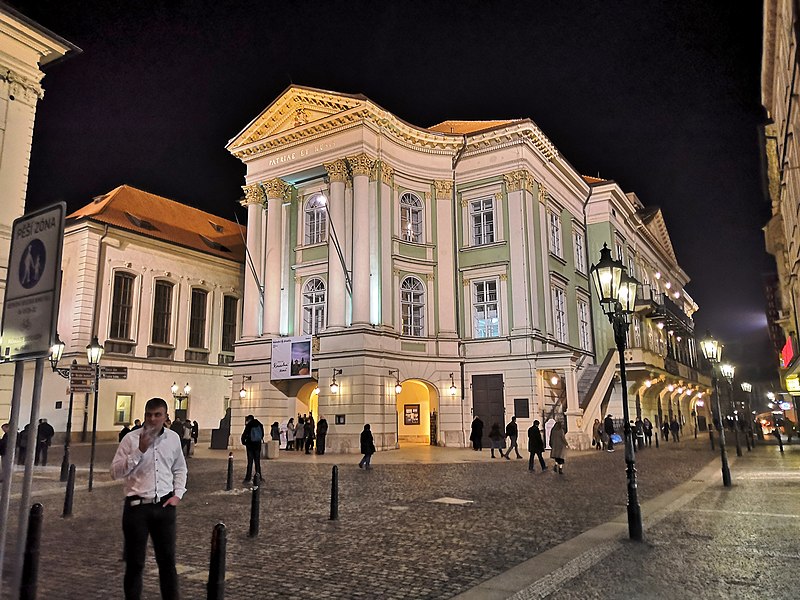
Capacity: 650
Period of construction: from 1781 to 1783
This late 18th-century theater was built to give the general public access to arts and music. Although it was initially designed to accommodate performances of German and Italian operas, other performances were also added to the program. The local public welcomed Mozart’s operas far more warmly than in Vienna, so much so that he decided to present the premiere of Don Giovanni in 1787 there.
6. Markgräfliches Opernhaus, Bayreuth, Germany
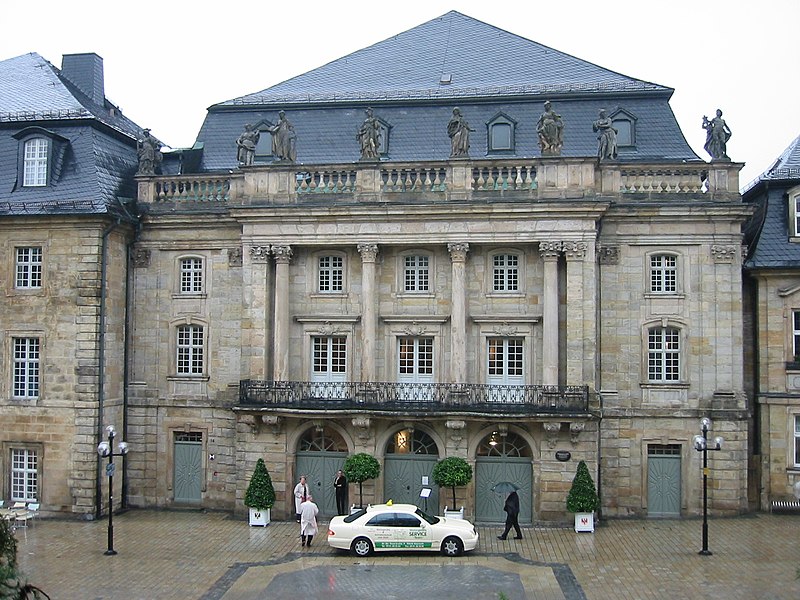
Capacity: 487
Period of construction: from 1745 to 1750
This sumptuous theater has perfectly preserved the atmosphere of the 1700s: there, it’s possible to discover how the public of that time listened to music and singing. The person in charge of the project was the architect Giuseppe Galli Bibiena, who built this Baroque-style building which is now a UNESCO World Heritage Site. Thanks to this theater, the famous Wagner settled in Bayreuth from 1872 to his death in 1883.
5. San Carlo Theater, Naples, Italy
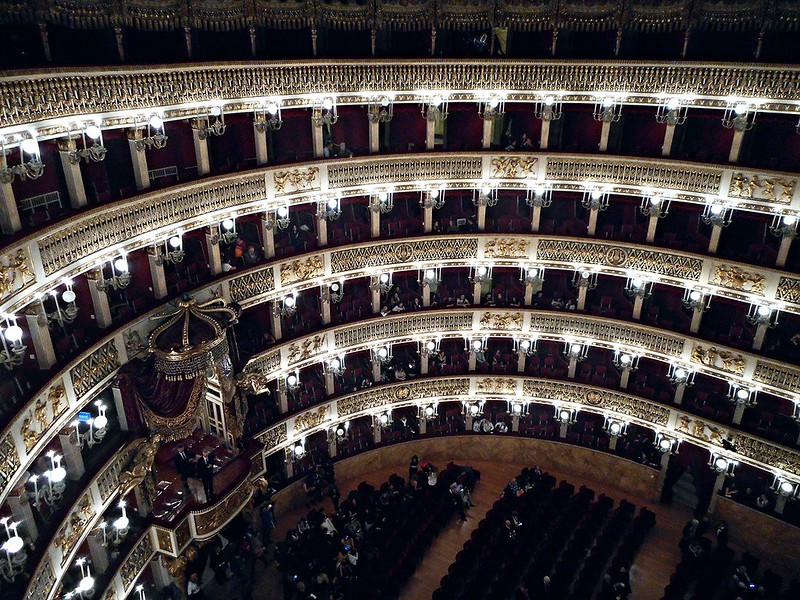
Capacity: 1386 seats
Period of construction: 1737
Since its inauguration, the San Carlo Theater immediately became an important place of art and culture. The theater was damaged by a fire in 1816 but the Tuscan architect Antonio Niccolini restored its original splendor. The giant stage can bear the weight of horses, camels, and even elephants! Once inside, don’t forget to look up: the majestic ceiling houses a fresco depicting Apollo presenting the goddess Minerva to the greatest poets in the world.
4. Olympic Theater, Vicenza, Italy
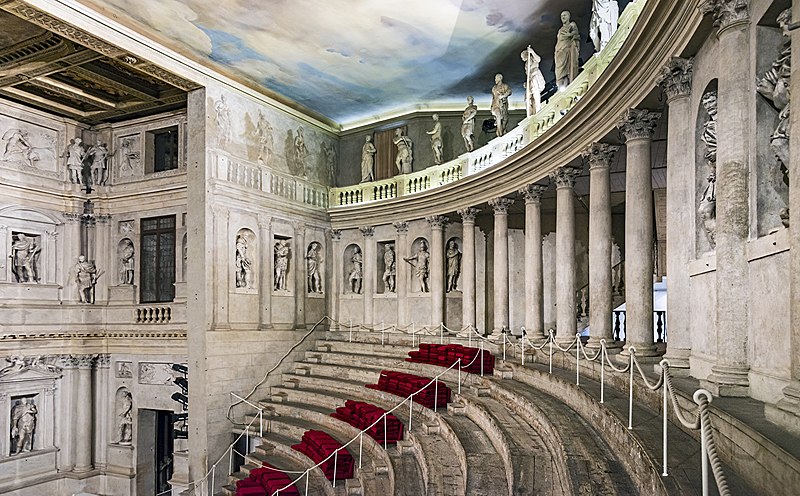
Capacity: 470 seats
Period of construction: from 1580 to 1585
This theater is universally recognized as one of the artistic wonders of Vicenza. But, it’s also a Unesco World Heritage Site and one of the masterpieces of one of the greatest Italian architects, Andrea Palladio. This building is the oldest covered theater in the world, it was inaugurated on March 3, 1585, with the historical representation of Sophocles’ Oedipus the King. The interior of the theater simulates the outdoor setting of classical theaters and is decorated with 95 statues representing the characters linked to the founding of the Olympic Academy or the theater itself.
3. Gran Teatre del Liceu, Barcelona, Spain

Capacity: 2292 seats
Construction period: 1847
Located in the heart of the city of Barcelona, on one of the main avenues, Las Ramblas, this theater, better known as El Liceu is famous for being the oldest theater in the city. It has gone through a troubled history made up of fires, bankruptcy, and even explosive attacks; despite this, it’s still in great condition and hosts important performances.
2. Teatro alla Scala, Milan, Italy
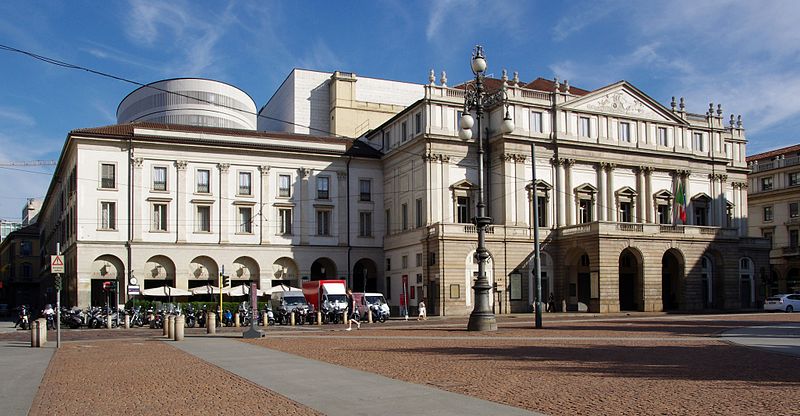
Capacity: 2030 seats
Period of construction: from 1776 to 1778
The theater, better known as La Scala, was founded by Empress Maria Theresa of Austria. Its inauguration took place in 1778 with the staging of Antonio Salieri’s opera Europe acknowledged. The theater takes its name from the church on the foundations of which it was built, Santa Maria alla Scala. Inside the sumptuous auditorium, the famous Gioacchino Rossini conducted some of the greatest operas ever staged and Giuseppe Verdi became famous right here. After the Second World War, La Scala reopened under the direction of Arturo Toscanini who, among other things, consecrated the success of Maria Callas.
1. Gran Teatro La Fenice, Venice, Italy
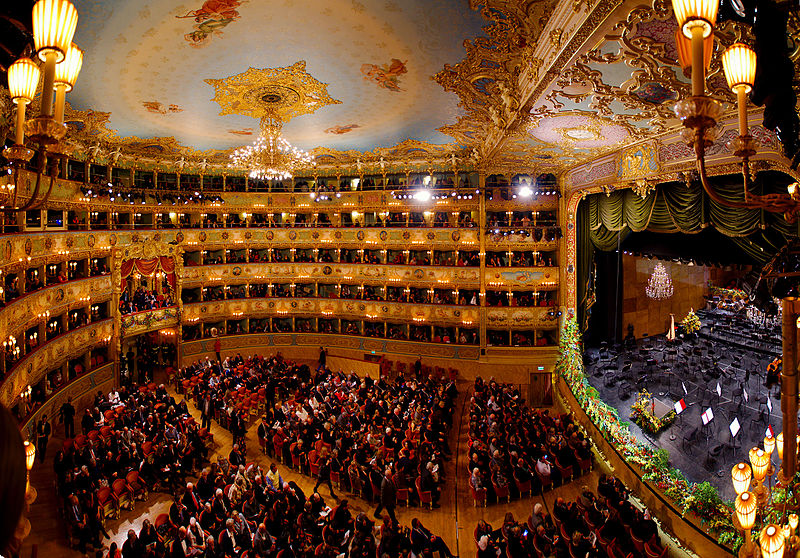
Capacity: 1000 seats
Construction period: 1789 to 1792, rebuilt in 1836 and 2003
The name of the theater, La Fenice, fits perfectly since the building was razed to the ground by fires and literally reborn from its ashes 3 times during its history. The original Teatro San Benedetto collapsed in 1774 and was replaced by La Fenice in 1792, only to be destroyed again by fire in 1836. The rapid reconstruction allowed the theater to enjoy a truly fortunate period, which allowed it to host important premieres, including Verdi’s La Traviata, Il Rigoletto, Attila, and Simon Boccanegra. In 1996, the theater was again destroyed by flames and, this time, two electricians were convicted of the disaster. After some complications, the theater reopened in 2003.
Check out these amazing hotel deals!
- Save up to 30% on your hotel in Hawaii!
- Last-minute holiday hotel deals
- Top hotel deals for a new year trip
- Visiting Paris? Find the Best Deals & Reviews at TripAdvisor.
- Save 30% on hotels in Ocean City, Maryland...a TripAdvisor Top 10 Summer Destination!
- Save up to 30% on your hotel on your Winter Vacation!
- Find top-rated hotels at the lowest prices on TripAdvisor. Check rates now!
- Save up to 30% on hotels for a romantic getaway!!
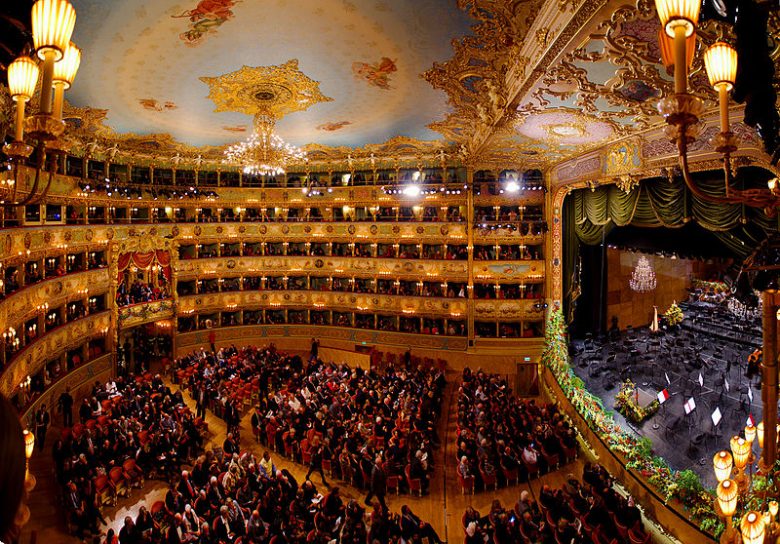





Find Us on Socials